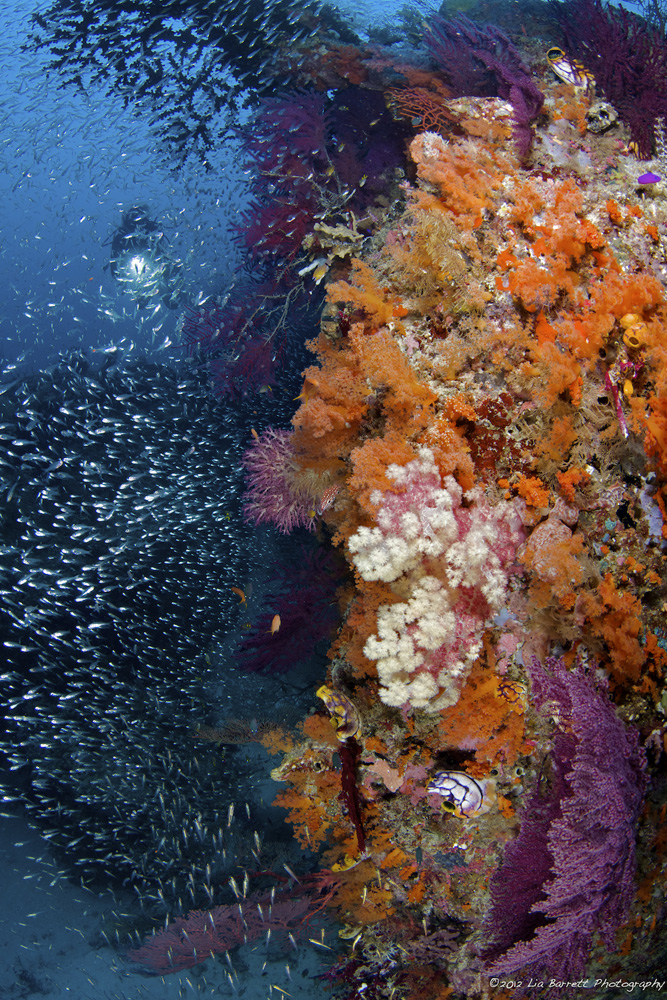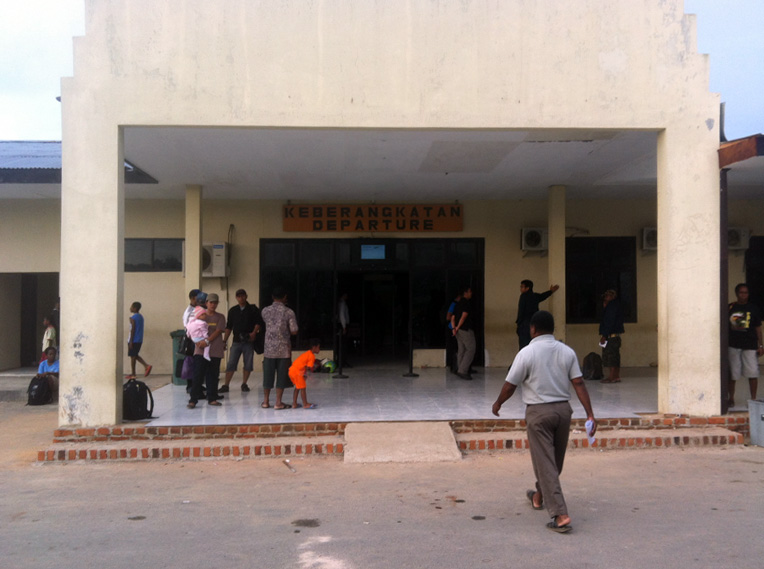There is plenty of hyperbole in the diving world – we are never afraid to talk up the beauty of the places we dive in and the trips we offer. This time we will just drop some facts on you:
- 1508 species of fish
- 537 Species of Coral (75% of all the worlds species)
- 699 Species of mollusk (7 different species of Giant Clam alone!)
- 283 species of fish counted on ONE dive
Raja Ampat is the center of the Coral Triangle – the mist biodiverse marine ecosystem on earth and there is nothing to compare it to (the Caribbean Sea has 70 species of coral). More species of coral and fish call Raja Ampat home than any where else. The islands that make up Raja Ampat are remote and relatively undisturbed by humans and this has helped maintain the pristine nature of the whole region – above and below the water. And it shows…every dive on our Liveaboard, every small islet we pass…every thing makes it clear that this is amazing!

Uniquely the area is also home to one of the most progressive protection areas in the world. The park is running very conservatively with much of the money helping protect the park and assist those inside the park. The area is now home to the largest Manta Ray protection zone on earth – no fishing allowed! It is also self-policed with both the diving community and the local communities taking his very, very seriously. Even the number of boats operating in the area is tightly controlled and each individual’s park pass is good for one year – so keep your tag and visit again!
Can we make it clear – Raja Ampat Diving is simply the best! The Manta Rays, the sharks, the seahorses, the coral….oh…that endless coral. The dense marine life is so very obvious on every dive that you are often unable to take it all in. We have to dive the same sites again and again just to fully understand all that we saw – and each diver comes back with different experiences. The diving is stellar and no one ever forgets their time here.
Best Time to Visit
Near-perfect conditions can be expected from mid-October to Mid-December, though the “rainy season” is mild compared to most of Indonesia. June and July are the months with most rainfall.
History
Habitation goes back thousands of years Raja Ampat Archipelago in the 15th century was part of the reign of Tidore Sultanate, a great kingdom centered in Maluku Islands. To run its government, the Sultan of Tidore appointed 4 local kings to rule in the the island of Waigeo, Batanta, Salawati and Misool which were the four largest islands. The term “4 Kings” became the root of the modern name Raja Ampat.
Yet, after the Dutch invaded Maluku, it became a protectorate claimed by the Netherlands. It had changed hands a few times until Indonesia gained independence. Traditional culture still strongly exists throughout the region and they are very welcoming to visitors. The main religion is dominantly Christian while both Islam and traditional Animist religions are very common.
The regency celebrates its anniversary on May 9th and is now part of the province of West Papua. As we look at the map of West Papua Province, this regency is situated in the western island of bird-beak like papua island. Raja Ampat consists of approximately 610 islands with a total length of 753 km coastal lines.
Geologically – The area’s massive coral colonies along with relatively high sea surface temperatures, also suggest that its reefs may be relatively resistant to threats like coral bleaching and coral disease, which now jeopardize the survival of other coral ecosystems around the world. The high marine diversity in Raja Ampat is strongly influenced by its position between the Indian and Pacific Oceans, as coral and fish larvae are more easily shared between the two oceans. This seems to indicate that the area has the oldest existing reefs as well – pollinating the worlds oceans after warming and cooling periods
Weather
As far as weather is concerned, any time of year is a good one to visit Raja Ampat. Climate and diving conditions are good all year round – there isn’t really an “off-season”. Potentially heavy rains happen during parts of the day in June and July, but still great diving and snorkeling

